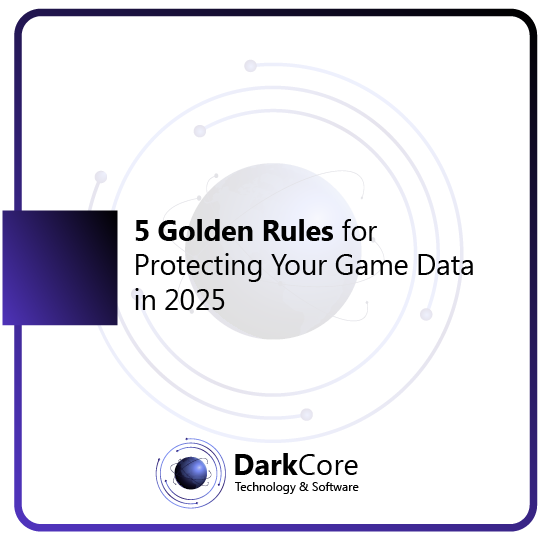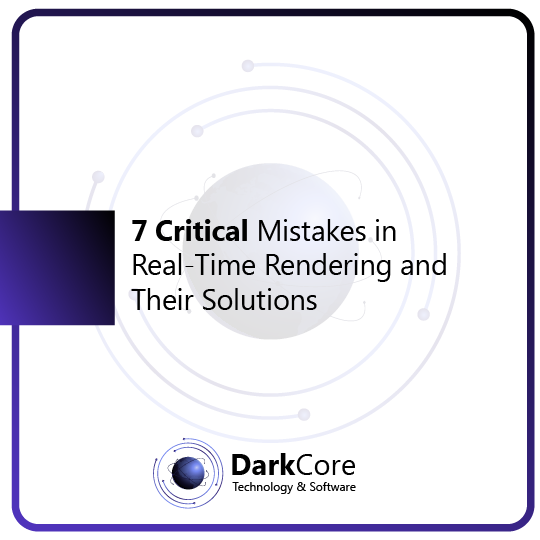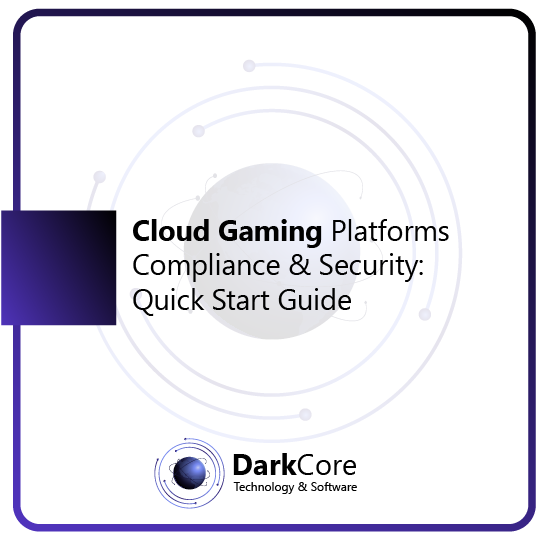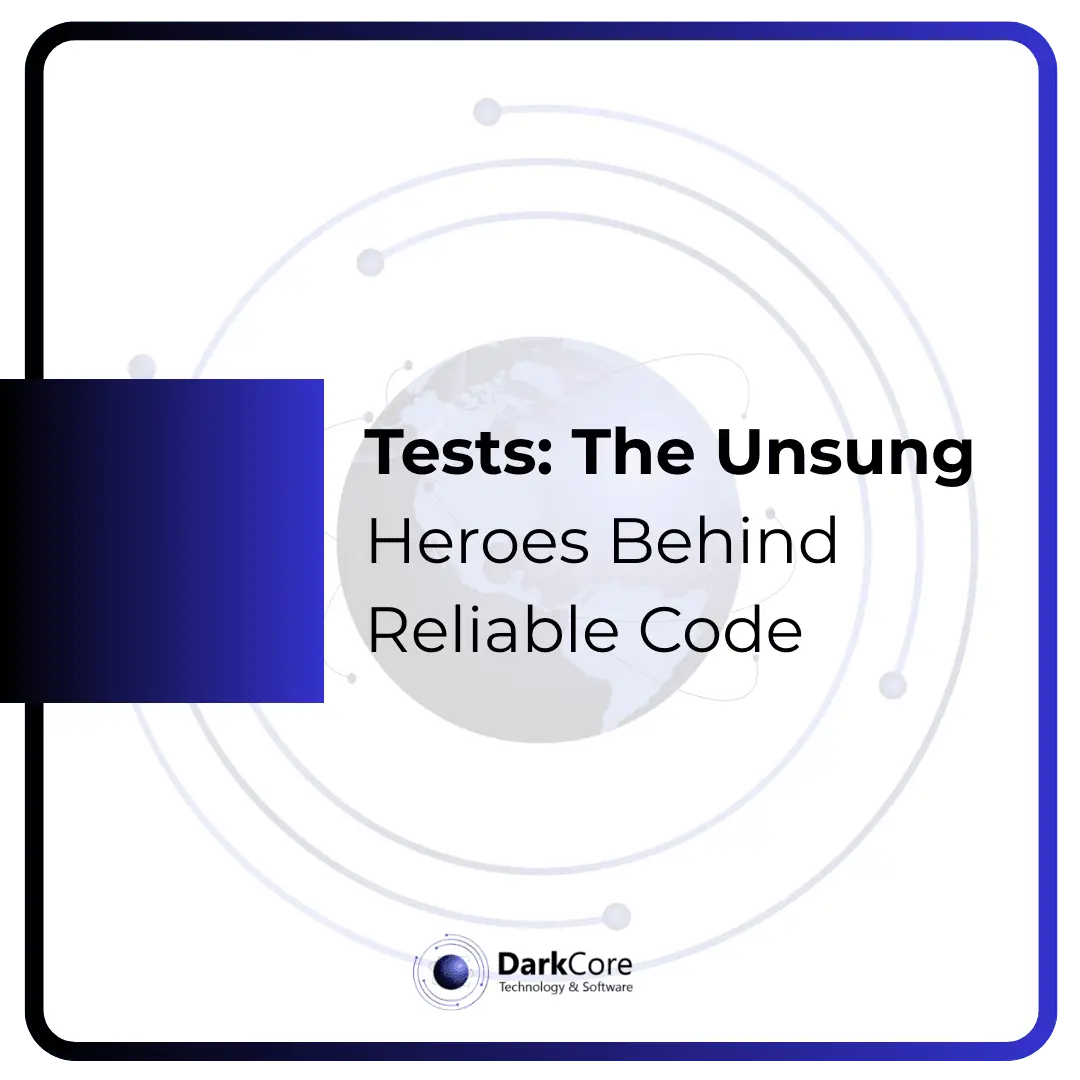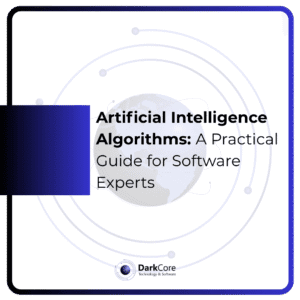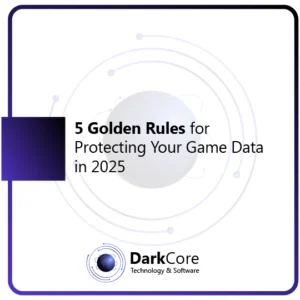2025 marks a pivotal moment for data protection strategies in the gaming industry. With a growing user base and an economy driven by micro-transactions, safeguarding player data privacy and integrity has never been more critical. In this article, based on the DarkCore team’s experience, we detail five golden rules.
- End-to-End Encryption (E2EE)
All in-game chat, profile updates and financial transactions are secured on the client side using symmetric keys in high-performance, authenticated modes such as AES-GCM or ChaCha20-Poly1305. For each session a unique “session key” is generated securely between parties via Diffie–Hellman (DH) or the more modern Curve25519-based X25519 key-exchange protocol. This guarantees Perfect Forward Secrecy—so that even if a future key is compromised, past messages remain confidential. Key management is fully decentralized via a PKI or “trust layer.” Each device or browser session generates its own private key locally; only the corresponding public keys are sent to servers, which act purely as distributors and never handle private or session keys. For distributed key verification, Web-of-Trust (WoT) or P2P blockchain-based signing can be integrated, allowing users to independently confirm each other’s public-key authenticity even if a server is compromised or offline. In group chats, multi-party key exchange protocols and ratcheting mechanisms derive a fresh subkey for every message. This ensures that if one participant’s device is breached, neither past nor future messages of other participants are exposed. In asynchronous scenarios—profile changes or financial operations—Ed25519 signing keys authorized by the owner add digital signatures, so the server can cryptographically verify who authored each message and maintain an auditable chain of authority. For performance and scalability, key pairs may reside in hardware security modules (HSMs) or Trusted Execution Environments (TEEs), with mobile clients using Secure Enclave or Keystore. On the server side, only metadata necessary for routing—timestamps and recipient lists—travels in encrypted headers, while message bodies stay fully encrypted. Even in the event of a server breach, both key material and sensitive content remain protected. Together, these layers deliver low latency, robust security and user-centric privacy, ensuring DarkCore’s platform offers the highest level of data protection. - Regular Security Audits
Regular audits create a comprehensive defense at both the application and infrastructure layers. At least twice a year, external “black-box” and internal “white-box” penetration tests and ethical-hacker assessments combine automated scans (OWASP ZAP, Burp Suite Pro, Nessus, Qualys) with manual exploit analysis. Discovered vulnerabilities are scored using CVSS and an organization-specific risk matrix, categorizing them as Critical, High, Medium or Low priority. Findings feed into a centralized Vulnerability Management Platform (e.g. Jira Security, Kenna Security), where each issue’s technical details (affected IP/URL, vulnerability type, proof-of-concept steps) and business impact (data privacy, service availability, reputation) are recorded. Automated remediation tasks trigger according to SLAs—48 hours for Critical, 5 business days for High—ensuring timely resolution. These audit processes integrate into CI/CD pipelines: SAST and IAST run during code builds, while DAST executes in pre-production environments. Infrastructure-as-Code templates (Terraform, CloudFormation) are checked with policy-as-code tools (Sentinel, Checkov) to proactively catch misconfigurations. Results are visualized in a real-time Security Dashboard showing issue counts, vulnerability distribution, SLA compliance and trends—providing instant visibility to both engineers and executives. Regular “lessons learned” sessions drive root-cause analyses and updates to improvement plans based on OWASP Top 10, CIS Controls or NIST SP 800-53. Third-party software and external dependencies are audited annually as well: a Software Bill of Materials (SBOM) tracks open-source components for license and vulnerability scans, and “Right to Audit” clauses in supplier contracts ensure critical components undergo periodic reviews. Detailed technical and executive reports document proof-of-concepts, patch or configuration recommendations, and post-test validations—fueling a continuous security cycle that elevates DarkCore’s maturity year after year. - Anomaly-Based Monitoring
This layer ingests all telemetry—application logs, network flows, database queries and user actions (chat commands, profile updates, transactions)—into a central queue (Kafka, RabbitMQ). Collectors (Logstash, Fluentd) parse and normalize these events under a common schema (OpenTelemetry, ECS) so disparate sources can be compared. Behavior Modeling:- Time-Series Analysis: Algorithms like Holt–Winters or Prophet detect seasonality and trends in per-user request rates, transaction volumes and purchase amounts.
- Machine Learning: Isolation Forests, One-Class SVMs or Autoencoders spot outliers in a multidimensional feature space—session duration, concurrent connections, geo-location jumps, IP groupings.
Distributed engines (Apache Flink, Spark Streaming) perform windowed and continuous analysis, comparing incoming data to reference models and applying z-score or model-score thresholds. Alerting & Response:
Anomaly scores stream into a SIEM (Splunk, Elastic SIEM, QRadar) where predefined SOAR playbooks automate responses:- Session Throttling: Excessive chat or unusual purchase patterns trigger temporary suspensions and MFA challenges.
- Notifications: Security teams receive email and Slack/Teams alerts with incident details, related cases and remediation playbooks.
- Automated Mitigation: Malicious IPs or device IDs auto-blacklisted in NGFWs or WAFs.
Dashboards in Kibana, Grafana or Power BI display incident distributions, anomaly trends, affected user counts, geo-heatmaps and SLA compliance. Role-based views accelerate both strategic and operational decision-making. All detection and remediation actions are logged in full audit trails compliant with PCI DSS, GDPR and ISO 27001, preserving timestamps and policy versions for internal and third-party audits. - Role-Based Access Control (RBAC)
This layer enforces least-privilege across all components by defining distinct roles for development, operations and data-admin teams. 4.1. Policy Definition & Hierarchy- Roles (
Developer,Operator,DataAdmin) and their CRUD permissions on resources (API endpoints, database tables, production servers) reside in YAML/JSON policy files. - A role hierarchy (e.g.
PlatformAdmininheriting lower-level permissions) ensures proper privilege inheritance without granting undue rights.
- At the API gateway or service-mesh layer (Istio, Linkerd), JWT scopes and OAuth2 claims drive RBAC checks before traffic reaches microservices.
- Database-level RBAC in PostgreSQL, MySQL or MongoDB restricts users to permitted tables and procedures (e.g.
data_readonlyallows only SELECT;data_adminpermits all DDL/DML).
- Production server access flows through a bastion host with recorded SSH/RDP sessions and ephemeral time-limited roles—e.g.
Operatoractive only during maintenance windows after MFA. - Admin-level DB credentials are issued dynamically via Vault or Secrets Manager, eliminating long-lived static credentials and maintaining detailed access logs.
- Policy changes live in a Git-backed policy-as-code repo, gated by PR reviews from security and compliance teams—with a full audit trail.
- Quarterly access reviews generate reports of each user’s assigned roles; unnecessary privileges are flagged and revoked.
- SIEM-ing of audit logs (Splunk, Elastic SIEM) captures “who did what, when, where,” and anomaly-based monitors flag unusual access patterns (e.g. a dev reading financial tables).
- CI pipelines enforce policy linting and collision checks; invalid or overly broad changes are automatically rejected.
- Regular comparisons to CIS Benchmarks, NIST SP 800-53 or ISO 27001 ensure each role’s permissions meet minimum standards, with automated notifications for gaps.
- Roles (
- Backup & Disaster Recovery Plan
This layer ensures critical data assets meet Recovery Point Objective (RPO) and Recovery Time Objective (RTO) targets. 5.1. Backup Strategy & Schedule- Full Weekly Backups, Daily Incrementals and Hourly Change-Block Tracking optimize storage and enable point-in-time restores.
- Versioning and retention policies (daily: 7 days; weekly: 4 weeks; monthly: 12 months) plus seven-day rotating snapshots for financial data.
- Geo-replication to at least two regions’ object stores (AWS S3, Azure Blob, GCP Storage) protects against regional outages.
- Hot vs. cold tiers balance retrieval speed and cost; “hot standby” indexes for urgent restores, archival tiers for older data.
- Quarterly or semi-annual DR drills simulate region loss, DB corruption or network outages. Reports document any RTO/RPO deviations.
- Recovery steps codified as Terraform/Ansible playbooks; CI/CD can trigger restores via
aws rds restore-db-instance-from-s3orgcloud sql backups restore.
- Streaming replication (PostgreSQL, MySQL binlog) ensures low-latency data flow to standby clusters.
- Checksums and bit-rot detection run on each snapshot; failures trigger immediate alerts.
- Automation platforms (Jenkins, GitLab CI) track backup success rates and durations; failures generate email and Slack notifications.
- Dashboards display weekly completion rates, RPO drift, sample restore scores and storage metrics.
- All backups encrypted in transit (TLS) and at rest (AES-256). Access to backup stores governed by strict IAM roles.
- Detailed logs of backup and restore actions support PCI DSS, ISO 22301 or NIST 800-34 audit requirements.
These five rules will help you secure your game data in 2025 and beyond—keeping player experiences uninterrupted and ensuring full compliance with evolving regulations.

